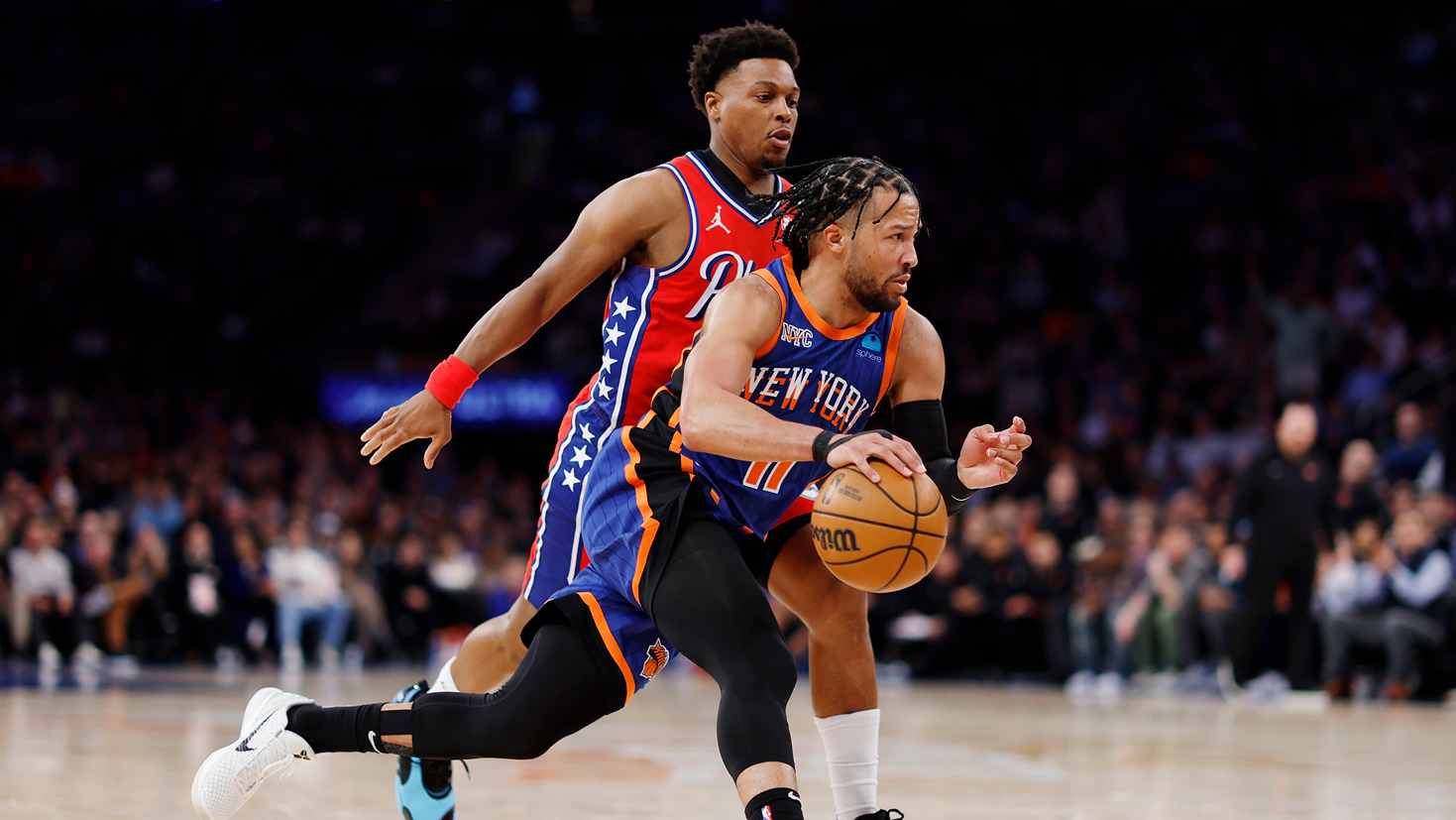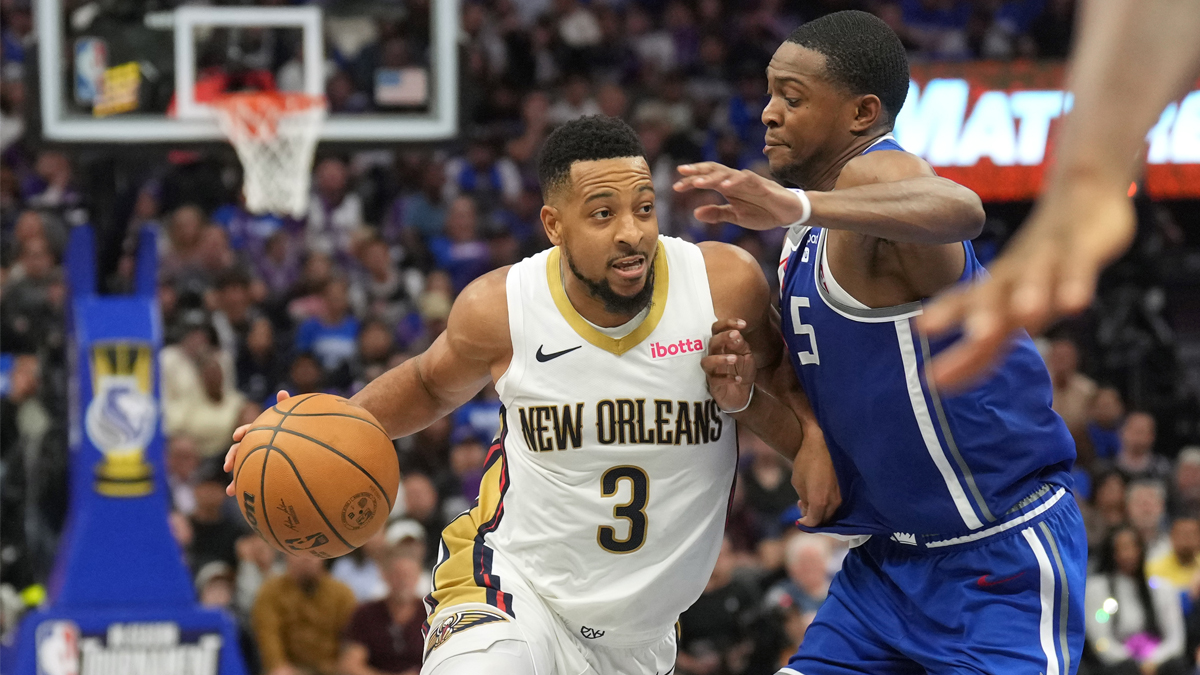The question of how Joel Embiid copes with double teams isn’t a new one in the Sixers’ universe.
We’ve dissected the Sixers’ spacing around him in the post, the team’s off-ball movement, Embiid’s past troubles with making quick decisions and much more. As long as Embiid is too big and too skilled for most defenders to handle on their own, it will remain an important topic for the team.
There was plenty worthy of praise from Embiid 29-point, 16-rebound, four-assist performance Tuesday night in the Sixers’ 100-93 win over the Raptors, but head coach Doc Rivers singled out his passing.
Stay in the game with the latest updates on your beloved Philadelphia sports teams! Sign up here for our All Access Daily newsletter.
“He was terrific,” Rivers said. “Dominant. It’s funny, obviously he had 29 points, (but) I thought he made the three key plays down the stretch by passes. He got the ball out of the post, swung it; got the ball again, swung it to Seth (Curry) for a three. That’s how we have to play.
“Joel Embiid is a dominant basketball player and the other teams are going to send people. We work on it every day, everyone getting to the right spots so Joel doesn’t have to think, he can just pass. And he did that tonight.”
Through the very small sample size of three healthy games, Embiid has an 11.9 turnover percentage, per Cleaning the Glass. That’s well under his career best of 13.5 percent, even after he turned it over five times Tuesday. He’s producing 1.08 points per post-up possession, a nearly identical figure to last season. While he’s not racking up lofty assist totals, he’s been good at hitting the open man and forcing the defense to scramble. If he does that, limits turnovers that stem from excessive deliberation or over-dribbling, and continues to score efficiently when there’s no help defense, the Sixers will be happy.
In theory, it also should help that Seth Curry and Danny Green have historically been better outside shooters than Josh Richardson and Al Horford who draw more respect from defenses. Against a Raptors team especially zealous in double teaming Embiid, it seemed the Sixers’ three-point marksmen were primed to profit.
NBA
“It’s definitely tough to double him now,” Ben Simmons said, “because if you’re doing that, then we’ve got three perimeter guys out there that are slashers. If they’re not reading it the right way, we’ve got endless options that are open. He’s doing a good job of finding those guys.”
Instead of cashing in, however, the Sixers converted only 4 of 17 three-point tries on which the closest defender was six or more feet away.
Curry did sink an important three that put the Sixers up by five with 1:05 remaining off a two-man action with Embiid. The play began with Embiid screening for Simmons and receiving a low pass near the foul line. He gave Curry a dribble handoff on the left wing, got the ball back from him a second later and blew by Aron Baynes with a pump fake and drive toward the baseline. Embiid then encountered a trio of Baynes, Kyle Lowry and Fred VanVleet, found Curry at the top of the key and watched his teammate essentially seal the game.
“I love and hate playing against the Raptors, especially the way they play me — doubling me even if I don’t have the ball,” Embiid said. “It’s frustrating. I’m not happy about the turnovers but I thought tonight, as soon as I got the ball, I kicked it out and we just moved the ball. We missed a lot of wide-open shots.”
After shooting 1 for 6 during the Sixers’ abysmal offensive first half, Curry was 4 for 5 after halftime. He thought Embiid made a cunning play.
“It’s just a simple two-man game with me and Joel,” Curry said. “I knew I wanted to get him the ball. If I was wide-open, I was going to shoot the ball coming off. But I knew I had to get him the ball because if they’re playing 1-on-1, he’s going to score.
“Joel got by his man, took a couple dribbles and he roped the man — I feel like he knew he was going to make that pass as soon as he beat his man. So he roped him in and put it right on the money, and got a good look off of it.”
In those situations where Embiid’s driving from the wing or top of the key, he’s often responsible for spontaneous, instinctive decisions. When he’s at home in the post, there’s usually more time to think.
If the Sixers’ spacing is precise, though, and Embiid knows where his teammates are starting — Simmons in the “dunker spot” and three shooters behind the arc — there’s less data for him to parse. And if those shooters play as they’re labeled, it all makes sense for the Sixers.
“I love sharing the ball,” Embiid said. “I love getting my teammates involved. Especially if we’re making shots, it just makes my job easier. Now you’ve got to think about doubling me. A night like tonight, the way they doubled and they tripled me, if we would have (gone) ... 4 for 5 to start the game, then they’ve got to adjust — and now I have single coverage where it’s kind of hard to stop me 1-on-1. We all worked together but like I said, I’ve got to give my teammates and the coaches a lot of credit.”


